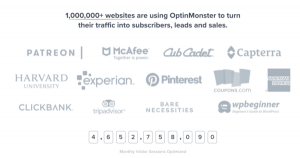As a writer, I get the appeal of winging it. There’s nothing quite like letting your brilliance flow freely and organically from your mind onto the page. But as a marketer, I can appreciate the importance of planning and strategy. You need to strike a balance between the two, and content calendars let you achieve this.
Content calendars help you define an editorial direction by outlining predetermined topics or ideas that align with your overall marketing objectives. But done properly, they also allow some freedom so that you can take advantage of trends, events, and newsworthy topics that you didn’t initially plan for.
Here are a few things you should consider when you’re constructing your own content calendar.
1. Your Audience
Wouldn’t it be awesome if you could write anything you want? Well, you can’t. Your goal is to create content that your audience will love, not that you love making (if these are one in the same, I applaud you). Since the objective is to appeal to your prospective buyers, you need to identify a) who these buyers are and b) what they want. Here’s how:
- Develop a buyer persona(s), if you don’t have one already
- Look at FAQs to get insight into what kind of questions people are asking and how you can answer them
- Look at your past content to see what kind of content is performing well. This can help you understand what topics your audience is interested in; information you can use to guide future content development
Once you understand who your audience are and what kind of content they want and need, you have the foundation in place to begin planning an effective content strategy.
2. Keywords And Search Volume
Conducting keyword research can help you speak your customers’ language. Keywords indicate not only what people are searching for, but also how they are searching for it. If you can understand the words and phrases people are using to find out about services or products like yours, you can start providing them with the content they need, in terms that resonate with them.
Keywords can also give insight into where prospects are in the buying cycle — if somebody is entering queries that have long-tail terms and buying signals, they will be better served with sales-focused, bottom of the funnel content than will someone using more general terms. Thus, you can map keywords to the buying cycle, which will help guide the content you create.
You should also consider search volume and competition when researching keywords. There are no steadfast search volume rules, but you want to ensure that the terms you are targeting are being looked for enough to make it worth your while. Long-tail keywords are good to target as they generally indicate that a prospect is further along in the buying process, but if a particular term is searched only 10 times per month, you’ll generally want to avoid it. Additionally, you’ll want to consider the competition — higher competition means that you are less likely to rank for a particular search term. Ideally, you want to aim for lower competition keywords that are relevant to your business and have good search volume.
3. Seasonality
Many businesses experience spikes based on seasonality. Retailers, for example, will sell more during the Holidays. When you are creating a content calendar, you should aim to include topics relevant to the season.
Use Google Keyword Research Tool to gain insight into what people are searching based on the season. You are likely to find that certain types of terms will rise during certain months, and you can take advantage of this by targeting those keywords and topics that your prospective buyers are looking for during that time. Here’s how to locate these trends:
- When you are conducting keyword research, look at month-over-month search volume. As an example, I’ve chosen to enter in the keyword building a pool. Unsurprisingly, the search volume increases leading up to and during the summer, but dies down as autumn begins.
- Based on these fluctuations in search volume, decide the best time to target this keyword and tackle this topic. For the example I’m using, I would likely release a blog in May.
- Add the topic to your content calendar and indicate the date on which it should be published. It doesn’t need to be an exact day — when I create content calendars, I generally like to indicate in what month or week the content should be released (this will depend on how often you are releasing content; the more content you release, the more specific you will want to be regarding publishing times).
Remember, keyword research isn’t the only thing informing seasonality. You know your business; if certain types of services or products are more appropriate for particular times of the year, if you get a high volume of the same questions in a particular month, or if services/product sales peak at certain times, you should use this information to determine when topics related to these products, services or questions should be published ” and plan accordingly.
4. Priority
A problem I often come across with content calendars is that they lack any semblance of topic prioritization (I’ve made this mistake myself in the past). Prioritizing is important because it indicates, within your calendar, what kind of topics or content are urgent, and what can wait. If you’ve identified content gaps on your blog or in your content more generally, you will want to fill the void by creating this first.
Let’s revisit our pool building example. Our pool builder also happens to sell, service and fix above-ground pools, yet they don’t have any content that lets their prospective customers know this. In this case, they would want to start creating content that would be relevant to somebody who is in the market for buying or repairing above ground pools. Topics could revolve around tips for maintaining an above-ground pool; things to look for when shopping for an above-ground pool; signs that your pool needs repair, and so on.
The point is to understand where your content gaps are, and use this insight to prioritize the items in your content calendar.
5. Content Promotion Plan
Your content calendar should include an action plan for content promotion. With each piece, you should indicate how you plan to promote it. Will you use social media updates? Will you create supplementary content pieces that will support it? Will you need budget to advertise the content over different platforms (Facebook, LinkedIn, etc)? Creating the content is only the first step ” without having a plan in place to promote the content, you can’t expect it to have significant reach or impact.
Within your content calendar, you should have a column or section that indicates what kind of promotion each piece will need. The detail included is up to you. For a blog post, it may be as simple as indicating social media platform you will push it out over, as well as the copy, hashtags, etc. you will post along with the link. For premium pieces of content such as eBooks, you may want to include a more comprehensive breakdown, including promotion budgets, platforms, ad targeting considerations and more.
Post from: Search Engine People SEO Blog
5 Things to Consider When Creating a Content Calendar
—
Written by Daniel Kosir,
The post 5 Things to Consider When Creating a Content Calendar appeared first on Search Engine People Blog.
(311)







